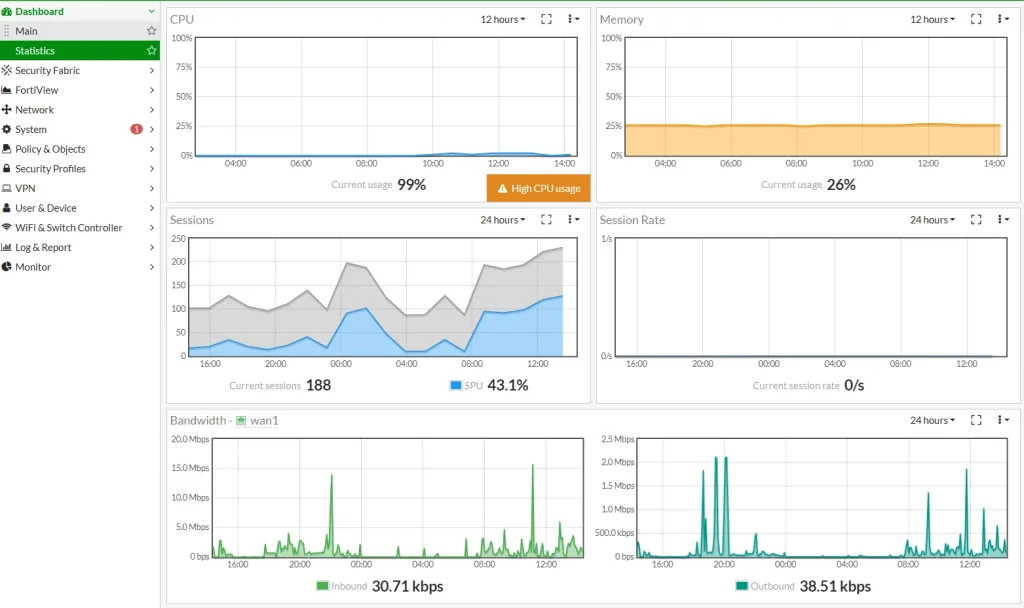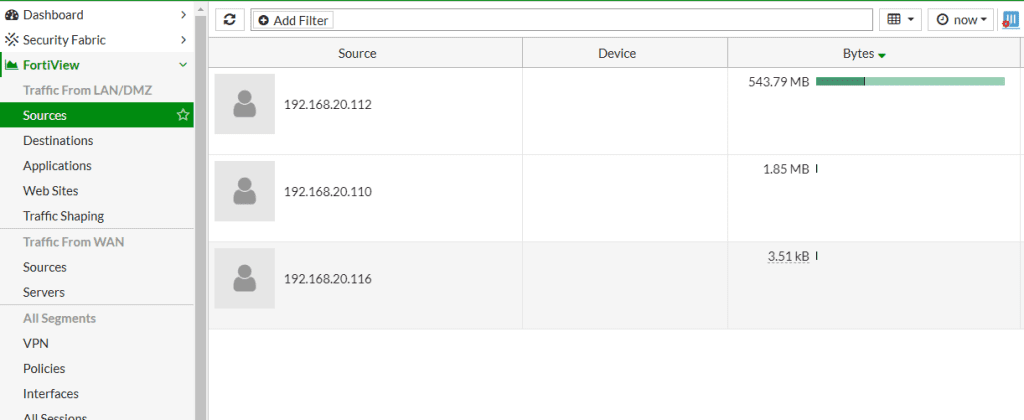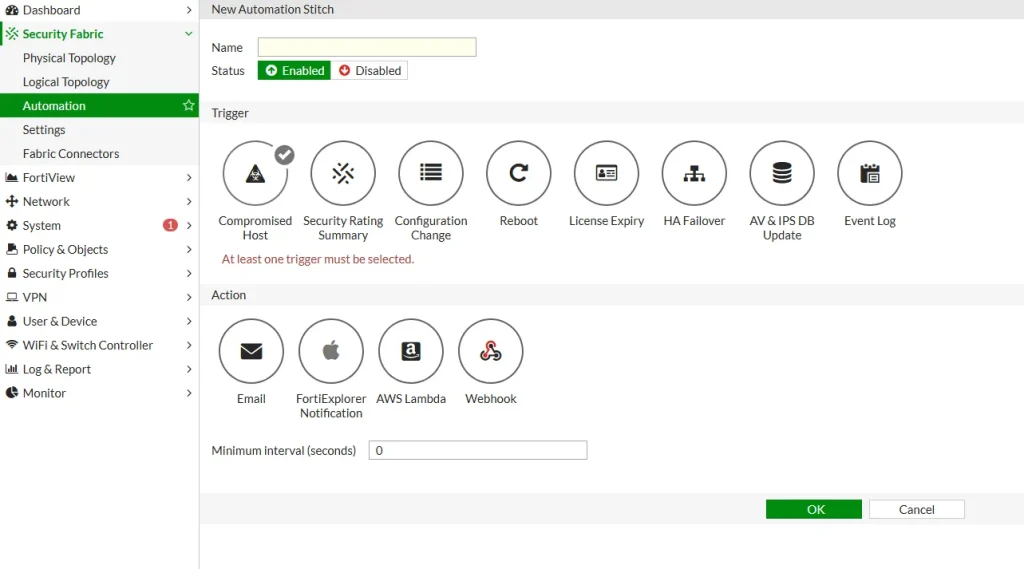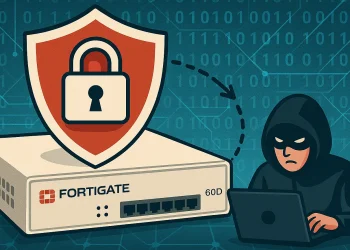Introduction
In today’s digital landscape, businesses face increasing cybersecurity threats, making traditional firewalls inadequate for modern protection. Many companies still rely on outdated routers or basic firewall solutions that lack advanced security features. Cyberattacks, data breaches, and performance bottlenecks can significantly impact operations, leading to financial and reputational losses.
Upgrading to a FortiGate firewall provides enterprises with robust security, better performance, and enhanced control over network traffic. Additionally, FortiGate offers powerful monitoring capabilities through the FortiView dashboard, which provides real-time insights into network activity, security threats, and bandwidth usage.
In this article, we will explore the risks of using legacy firewall devices and the improvements gained by switching to FortiGate, including Zero Trust security, secure remote access, bandwidth optimization, and network visibility with FortiView.
Security with Traditional Router Devices
Many businesses still use traditional routers with basic firewall functionality, which creates security vulnerabilities. These devices often lack deep packet inspection (DPI), intrusion prevention systems (IPS), and real-time threat intelligence. As a result, malware, phishing attacks, and unauthorized access attempts can easily bypass security measures.
Additionally, legacy firewalls struggle with scalability and performance. As businesses grow, more employees and devices connect to the network, increasing the risk of cyber threats. Without proper network segmentation, a single infected device can compromise the entire network. Legacy systems also lack advanced logging and monitoring, making it difficult to detect and respond to security incidents.
Without automated security updates, outdated firewall devices expose businesses to zero-day threats. Manually updating and patching these devices is time-consuming and often neglected, leaving critical vulnerabilities open for exploitation.
Limitations of a Regular Router Compared to FortiGate Firewall
- Limited Security Features – Standard routers typically lack Intrusion Prevention Systems (IPS), Web Filtering, and Deep Packet Inspection (DPI), making them vulnerable to cyber threats.
- Basic Firewall Capabilities – Most consumer-grade routers only offer basic NAT-based firewalls without advanced traffic filtering or deep security inspection.
- Weak Traffic Management (QoS) – Quality of Service (QoS) features are often minimal, providing only basic bandwidth prioritization without granular control.
- Limited VPN Support – Many standard routers support only basic VPN protocols, if any, and lack robust encryption or remote access options.
- Scalability Issues – Consumer routers struggle with high network loads and multiple concurrent connections, often leading to slowdowns or dropped connections.
- Minimal Logging & Monitoring – Standard routers offer very basic or no logging features, making it difficult to monitor network activity or detect anomalies.
- No Role-Based Access Control (RBAC) – Most routers do not allow granular user access control, meaning all users typically share the same network privileges.
- Lack of VLAN & Network Segmentation – Many standard routers do not support Virtual LANs (VLANs), preventing proper network segmentation and isolation.
- No Threat Intelligence Integration – Consumer routers do not integrate with real-time threat intelligence services, leaving them more exposed to emerging cyber threats.
- Weaker Hardware & Performance – Standard routers are designed for home or small office use, with limited processing power, making them inefficient under heavy network loads.
Moving to the FortiGate Firewall
Application Control & Web Filtering
Unlike traditional firewalls, FortiGate can identify and control applications running on your network. This means you can:
- Block risky applications (e.g., torrents, unapproved cloud storage)
- Prioritize business-critical apps (e.g., VoIP, Office 365, Salesforce)
- Enforce web filtering policies to prevent employees from accessing malicious or non-work-related websites

Zero Trust Design
FortiGate firewalls incorporate a Zero Trust security model, ensuring that every connection is verified before being granted access to the network. This approach minimizes insider threats and lateral movement of attackers. FortiGate’s segmentation capabilities allow businesses to create isolated network zones, reducing the impact of potential breaches.
Secure Remote Access
With the rise of remote work, businesses need secure access solutions. FortiGate firewalls offer built-in VPN (IPsec and SSL VPN), enabling employees to securely connect to the corporate network from anywhere. Unlike traditional VPNs, Fortinet integrates with identity management systems, ensuring authentication and enforcing multi-factor authentication (MFA) for added security.
Bandwidth and QoS Optimization
Network congestion and slow performance can hinder productivity. FortiGate firewalls provide advanced Quality of Service (QoS) settings that prioritize critical business applications over non-essential traffic. By dynamically managing bandwidth, businesses can ensure smooth VoIP calls, video conferencing, and cloud application performance.
FortiView Dashboard: Real-Time Network Visibility

One of the biggest advantages of FortiGate is the FortiView dashboard, which provides comprehensive network monitoring and analytics. Businesses can leverage FortiView to:
- Monitor Real-Time Traffic – View network activity, including bandwidth consumption and application usage.
- Detect Security Threats – Identify potential attacks, suspicious IP addresses, and unusual traffic patterns.
- Analyze User Behavior – Track users and devices on the network to detect anomalies or policy violations.
- Optimize Performance – Get insights into which applications consume the most bandwidth and apply traffic-shaping rules.
- Generate Compliance Reports – Create reports for audits, security assessments, and compliance monitoring.

Cost Savings on Security Operations
Although the initial investment in FortiGate may seem high, businesses save money in the long run by:
Reducing security breaches and downtime
Eliminating the need for multiple security tools (FortiGate combines firewall, antivirus, intrusion prevention, and web filtering in one device)
Lowering IT management costs with automation and centralized control

Wireless Network Security with Built-in Wi-Fi Controller
For businesses with Wi-Fi networks, FortiGate has an integrated wireless controller, eliminating the need for separate Wi-Fi security solutions. This ensures seamless protection for wired and wireless devices under a unified security policy.
With FortiView, businesses gain full visibility into their network, allowing IT teams to proactively manage security risks and optimize network performance.
What Businesses Improve by Migrating to FortiGate
- Enhanced Security – Real-time threat intelligence, next-gen firewall (NGFW) features, and intrusion prevention.
- Improved Network Performance – Traffic shaping and QoS ensure optimal application performance.
- Stronger Remote Access Security – Integrated VPN and MFA reduce unauthorized access risks.
- Full Network Visibility – FortiView provides real-time traffic monitoring and threat detection.
- Simplified Management – Centralized visibility and automation make security operations more efficient.
- Better Compliance – Meets industry security standards (GDPR, PCI-DSS, HIPAA).
Conclusion
Migrating to a FortiGate firewall offers businesses superior security, performance, and visibility. Unlike traditional firewalls, FortiGate integrates advanced threat protection, Zero Trust policies, secure remote access, and network monitoring with FortiView.
By investing in a FortiGate solution, companies can enhance security, reduce downtime, improve productivity, and gain full control over their network. If your business is still relying on outdated firewall technology, now is the time to upgrade to FortiGate.














